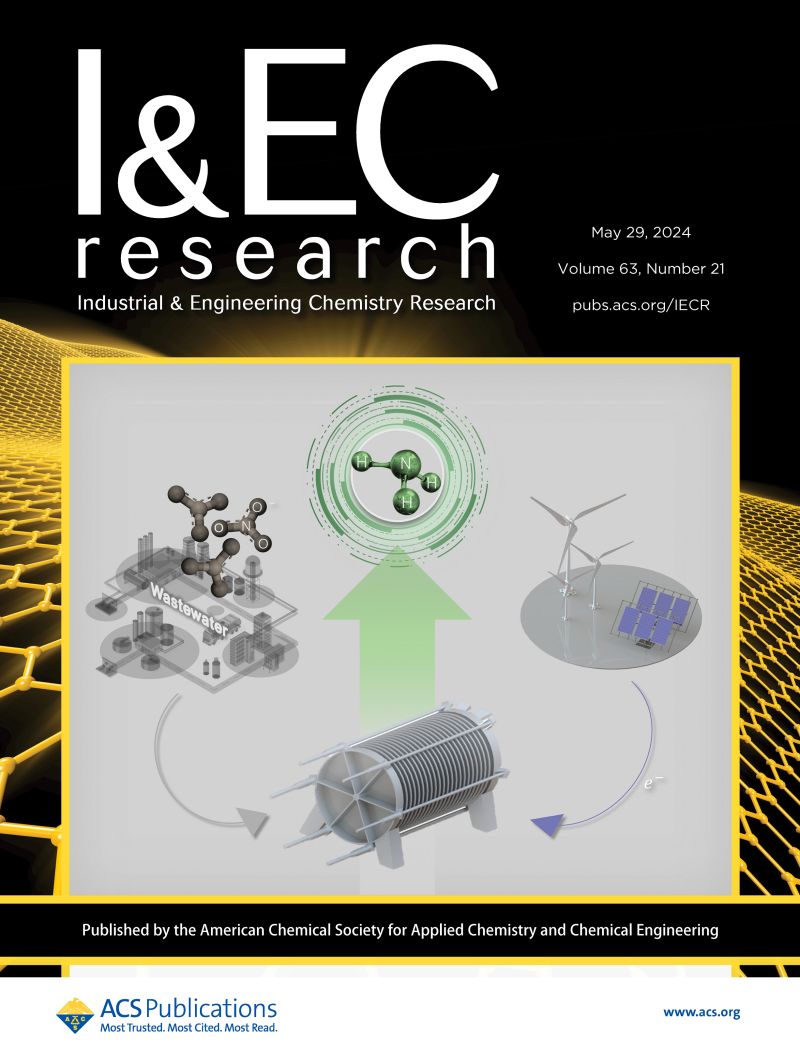Ocean Alkalinity Enhancement Using Bipolar Membrane Electrodialysis: Technical Analysis and Cost Breakdown of a Full-Scale Plant
IF 3.8
3区 工程技术
Q2 ENGINEERING, CHEMICAL
引用次数: 0
Abstract
A detailed techno-economic analysis was performed for a bipolar membrane electrodialysis (BMED) full-scale plant designed to produce large volumes of dilute alkaline solution for use in ocean alkalinity enhancement (OAE). OAE is a process by which the surface of the oceans is realkalinized to promote CO2 absorption from air by converting CO2 to carbonates for long-term storage in the oceans. The capacity of the BMED stack was designed to process ∼139 000 m3/year of desalination brine, resulting in 47 200 t/year of 2.1 wt % NaOH solution. The OAE plant was modeled using colocation with a desalination plant in southern California. Three scenarios were investigated, each focused on a different valorization of the BMED process byproduct of 46 600 t/year of 1.8 wt % HCl solution: selling (1) dilute HCl without further processing, (2) dilute HCl distilled to 20 wt % using carbon-free (solar) energy, and (3) dilute HCl distilled to 20 wt % using waste heat from a nearby power plant. The levelized cost of CO2 sequestration from the OAE plant, assuming no return on investment, ranged from 848 to 1076 USD/t of CO2, depending on the scenario. Subsequently, a discounted cash flow analysis was conducted to assess the price at which carbon credits would have to be sold as revenue source to make a profit on the plant. Our analysis indicates that the cost of energy, labor, loan repayment, and membrane replacement, as well as the inefficiency of commercial membranes, drive the economics of BMED for OAE, while highlighting the necessity to generate alternative byproducts other than HCl. Nevertheless, these high costs (1395–2315 USD/t of CO2) align with carbon credit prices currently indicated in contracts signed within the voluntary carbon market. A reliable outlook indicates that technical improvements and better economic perspectives can reduce the levelized cost of CO2 down to 394 USD/t of CO2.

求助全文
约1分钟内获得全文
求助全文
来源期刊

Industrial & Engineering Chemistry Research
工程技术-工程:化工
CiteScore
7.40
自引率
7.10%
发文量
1467
审稿时长
2.8 months
期刊介绍:
ndustrial & Engineering Chemistry, with variations in title and format, has been published since 1909 by the American Chemical Society. Industrial & Engineering Chemistry Research is a weekly publication that reports industrial and academic research in the broad fields of applied chemistry and chemical engineering with special focus on fundamentals, processes, and products.
 求助内容:
求助内容: 应助结果提醒方式:
应助结果提醒方式:


